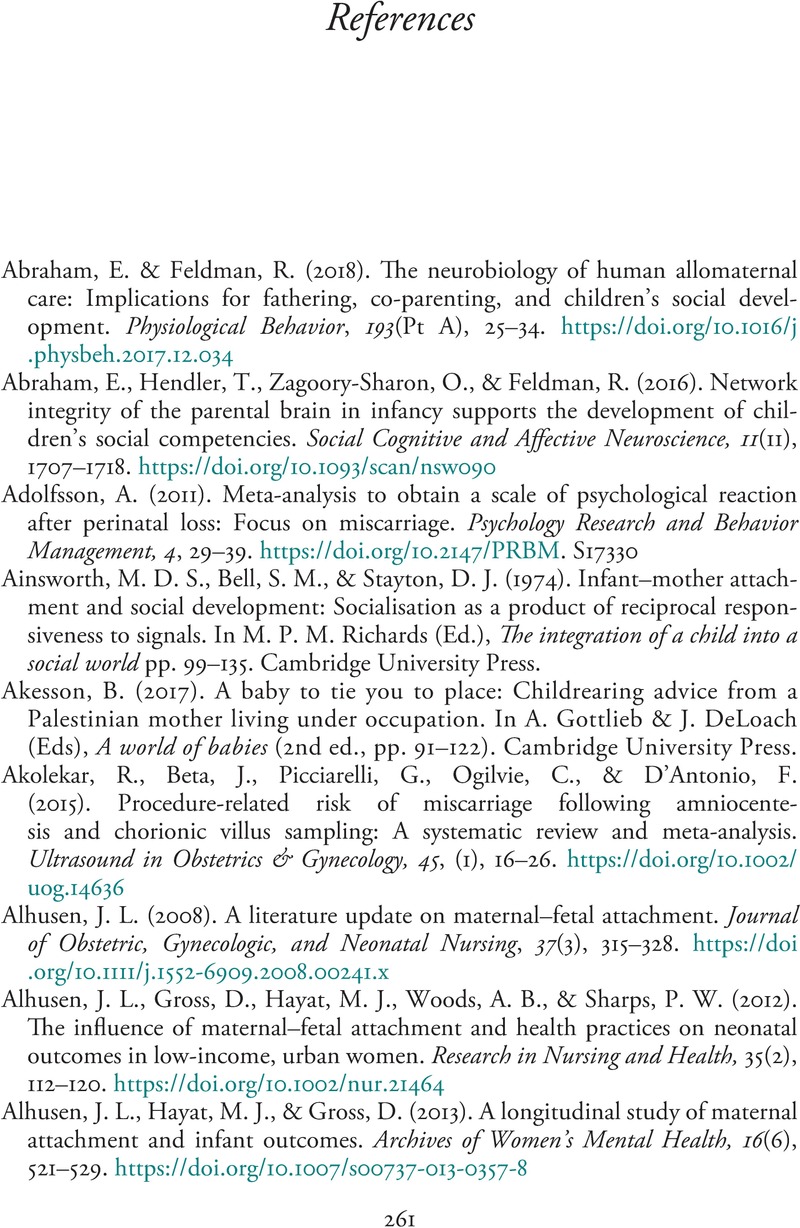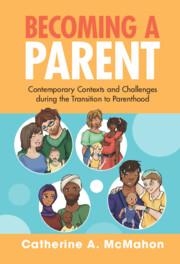Book contents
- Becoming a Parent
- Becoming a Parent
- Copyright page
- Dedication
- Contents
- Preface
- Acknowledgements
- Permissions
- Chapter 1 Contemplating Parenthood
- Chapter 2 Reproductive Technologies
- Chapter 3 Becoming a Mother
- Chapter 4 Becoming a Father
- Chapter 5 High Stakes Pregnancies
- Chapter 6 Alternative Pathways
- Chapter 7 Childbirth
- Chapter 8 The Fourth Trimester
- Chapter 9 The Way Forward
- References
- Index
- References
References
Published online by Cambridge University Press: 18 November 2022
- Becoming a Parent
- Becoming a Parent
- Copyright page
- Dedication
- Contents
- Preface
- Acknowledgements
- Permissions
- Chapter 1 Contemplating Parenthood
- Chapter 2 Reproductive Technologies
- Chapter 3 Becoming a Mother
- Chapter 4 Becoming a Father
- Chapter 5 High Stakes Pregnancies
- Chapter 6 Alternative Pathways
- Chapter 7 Childbirth
- Chapter 8 The Fourth Trimester
- Chapter 9 The Way Forward
- References
- Index
- References
Summary

- Type
- Chapter
- Information
- Becoming a ParentContemporary Contexts and Challenges during the Transition to Parenthood, pp. 261 - 303Publisher: Cambridge University PressPrint publication year: 2022



